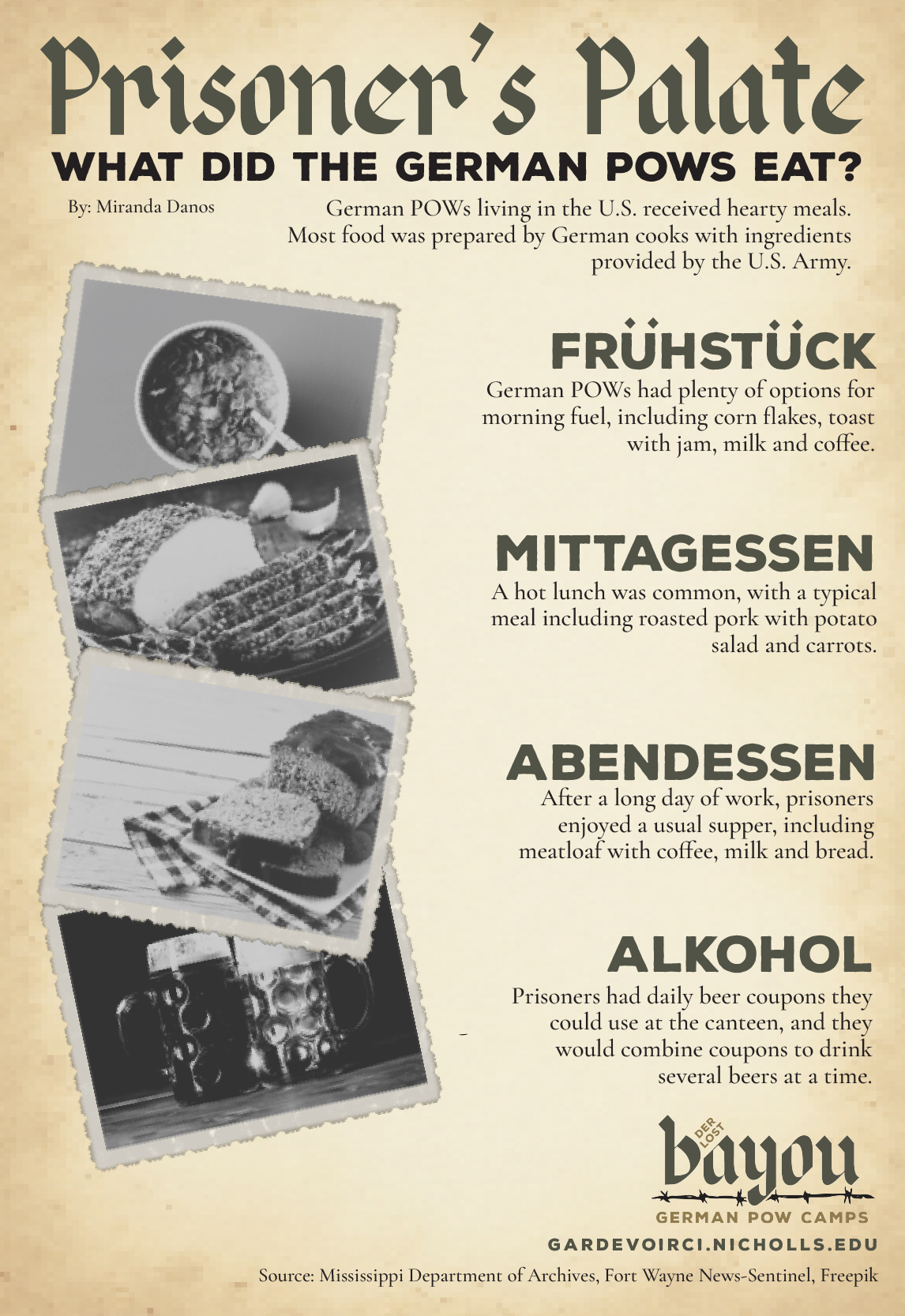kade bergeron features editor
During World War II, over 2,000 prisoners of war were confined in Louisiana’s Bayou Region, where they faced unfamiliar climates, terrain, and conditions. Yet, one aspect of normalcy remained — their food.
Camps had dining halls, sometimes called “mess halls,” that were primarily used for dining and communicating. These spaces served as a common area for all residents of the camps to gather, according to an article in the Mississippi History Now. “Food was not a complaint for the prisoners. In fact, most of the food was prepared by German cooks with ingredients furnished by the U.S. Army.”
The U.S. government provided ingredients that aligned with the typical nutritional standards of the 1940s era. Protein, grains, and vegetables were staples of the diet, as were some occasional forms of dairy, such as milk for coffee and butter for bread, according to Mississippi History Now.
Although these rations were supplied throughout the camps in the Bayou Region, they also were able to get local food from the locals.
“[Plantation owners] would take [prisoners] to their houses and feed them and treat them with some sweets, which was a rarity back in those days as it was rationed,” says Linda Theriot, secretary at the Houma Regional Military Museum.
"[Plantation owners] would take [prisoners] to their houses and feed them and treat them with some sweets, which was a rarity back in those days as it was rationed."
Linda Theriot
Due to the war efforts, supplies were limited, so the government provided nutritional rations based on availability. The meals were of the same variety that the military received, according to Mississippi History Now.
Depending on the camp location and the amenities associated with that camp, some prisoners of war received higher-quality ingredients compared to prisoners at other local camps.
The late Dr. Guy R. Jones was the primary physician who was responsible for monitoring the health of German prisoners of war at the Lockport/Valentine POW Camp. Jones said the prisoners received meals that were much better quality than those of the local Lockport residents, according to an article published by the Louisiana Historical Association.
The war efforts put a strain on residents obtaining goods, but for the POW camp residents, the supplies administered by the U.S. government eased this burden. Some say that the prisoners were better off in terms of food quality (and quantity) than citizens who were rationing to support the American troops, according to the Louisiana Historical Association.
In addition, the prisoners’ contact and work for local industries gave them access to other foods.
“Working the farmland probably gave prisoners [the ability] to earn food on top of [the] wages set by the U.S. government,” says April Cortez, North Thibodaux resident, and native of the POW camp area. “The food supplied to the camps was just the beginning… The prisoners got additional food from the locals and the landowners for their work.”

